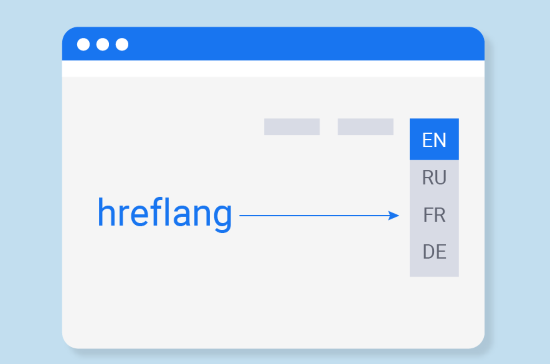In this article, you will come across 7 tips to design website for a global audience. Designing a site that appeals to the international audience might seem easier to design, than sites that target smaller geographic regions. However, it’s not as simple as it might seem. When designing for a global audience, you need to put a lot of things into consideration.
Things such as including a plugin that can help users from countries that don’t understand your language to be able to translate your content to their native language or for users to be able to convert their currency before making any purchase (this applies to e-commerce sites).
If you are thinking about designing for a global audience, then this article is what you need to achieve that goal. I have outlined several tips you can start using immediately.
Also Check:
- 6 Warning Signs that Your Developer Isn’t Competent Enough
- Monitor Website Keyword Ranking with these Freeware
- Monitor Website Changes with These Free Website Monitor Services
Let’s get started with the tips.
Best Tips to Design Website for a Global Audience:
Include a Translation Feature:

When it comes to designing for a global audience, most of your visitors will come from various countries around the world with diverse languages. One of the essential things you need to include in your design is a translation feature.
Your visitors coming from non-English speaking countries need to be able to translate your content to the various languages conveniently. It’s often quite expensive to hire a native language translator to provide you with localized text, and so your best bet is to use a WordPress plugin.
One of the best spaces to insert a WordPress translation plugin on your website is – in the footer or header. As long as users can find it easily, it doesn’t matter where you add it to the design. Always make sure that the meaning of the content does not change when translated to other languages.
Have a Beautiful Color Arrangement:

When thinking about designing, the color might not seem like it needs much thought. However, color can play a very important role in many cultures around the world. Color can be a sensitive issue for a global audience if not handled appropriately.
In cultures like China, the color red is used for good luck and celebration. While in the western cultures they consider red as a sign of love or danger.
Because of such issues like this, it’s better to choose a color that is neutral and does not have any background connotation. A neutral color that appeals to everyone. Blue is a worldwide color that works perfectively.
That isn’t to say that you cannot use the color red for designing your website. Do some research on color symbolism before you commit to using any color so as not to portray the wrong view to your audience.
Because of the psychology of color and how it translates in other countries, major e-commerce sites like Zappos, Walmart and Amazon use neutral-colored interfaces.
Include Exchange Rates:

When designing for a global audience for e-commerce sites, you will need a currency converter tool that will help users calculate exchange rates and other fees.
This also applies to websites that sell something and offer international shipping. It doesn’t just make sense to offer payment amount in one currency.
Most e-commerce platforms have a currency converter plugin, be sure to check on it before you start designing.
Limit the Amount of Text in Images:

You need to limit the amount of text on images because Google cannot translate text that are on images anytime it is translating the language of your site content for an international user.
You should try not to include images for headings and logo, because you might lose some of your potential buyers who don’t understand the foreign language.
There are no software’s which can change the graphical text on your website. Machine translation like Google Translate doesn’t work on graphical images also.
Before you take your site to a global audience, you need to ask questions like – are the images lacking in diversity, are there references within them that your audience won’t really understand. Images should always be a reflection of your audience.
Optimize your Site for Speed:

When you are thinking about designing for a global audience, you need to make sure that your site loads quickly and effectively. This is important when you are trying to reach the global audience.
If your site takes long before it starts loading or showing content, a lot of users are going to give up and go to other sites. When you are targeting an international audience, you need to keep in mind the potential internet connectivity options.
47% percent of users normally expects a site to load within two seconds or less, 40% will leave a site if it’s not loading within three seconds. These numbers help to demonstrate the importance of maintaining a reliable and fast site.
You can use tools like Pingdom Tools which accesses your pages from a location and returns information about how quickly the pages load. To make page loading faster, you can also use Content Delivery Network (CDN).
Geo-Targeting:

When you are designing for a global audience, you should not forget to include a geo-targeting plugin. This will help you to effectively target specific geographic countries and regions and also deliver content to visitors.
Google Analytics will tell you from where your site’s traffic originates from geographically. Whenever a user visits your website, their IP location will inform Google Analytics where the user is located around the world.
You can read more about geo-targeting if you are new to it, in other for you to be able to implement it in your website.
Use Hreflang Tags When Designing:

Hreflang tags are some kind of ‘traffic signs’ indicating to the search engines:
- That the content on your site has been translated into multiple languages
- Precisely what version of the content they should deliver to your website’s visitors
You can learn more about how you can add them to your website’s content.
Conclusion:
Designing your website for a global audience in a good idea, but it’s vital that you first consider how your design will affect the audience based on their location around the world.
The above tips should be a guideline before you start designing. Take the tips into consideration and you can also research more about them in other for you to put them into practice effectively.


